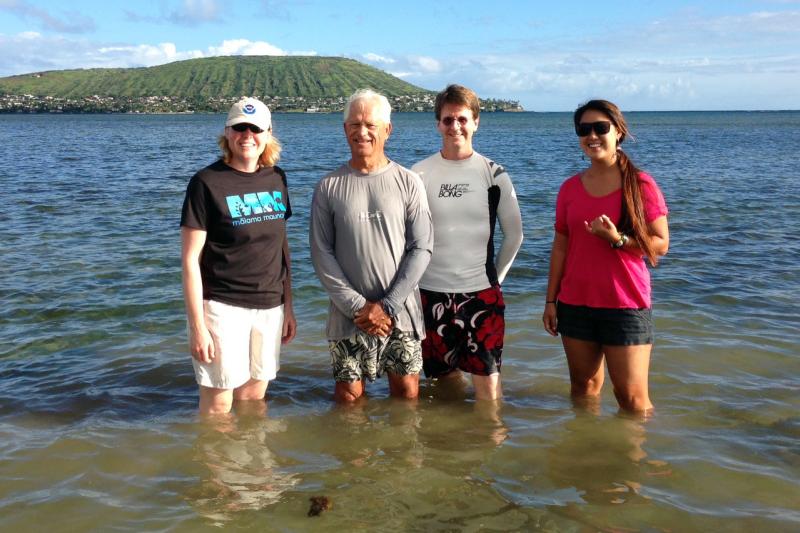Lani Watson is the Marine Habitat Resource Specialist for NOAA's Office of Habitat Conservation in Honolulu, Hawaii. She has been with NOAA for 21 years.
Describe your role or a project related to habitat that you are currently working on at NOAA.
The West Hawaii Habitat Focus Area is an effort that involves local communities, government agencies, non-profit organizations, and businesses. They’re all working together to improve ocean health along the coastline of West Hawaii. This is an exciting project! These partners are making a collective impact toward supporting fisheries and protected species, healthy coral reefs, and thriving communities.
What habitat work has been especially inspiring to you?
The work that people are doing to improve the coastal and marine habitat in and around their communities is very inspiring to me. They are dedicated to conserving and restoring habitat to support the natural resources that are part of their livelihood, food, and recreation.
Community members that I have met and worked with volunteer their time. They have a strong connection to the land and sea from both an environmental and cultural perspective. Stories about their families who have taken care of the land and sea for generations inspire me. They have deep connections to traditional practices, and believe that animals, plants, seasons, and natural cycles are culturally significant.
Describe a time when you were surprised by fish and/or habitat.
Growing up in Hawaii, I learned early on about the traditional Hawaiian ahupua'a system for managing the environment and natural resources. Seeing those traditions in practice today does not surprise me as much as amaze me—it gives me goose bumps (we say “chicken skin” here).
The ancient Hawaiians were in tune with the environment in a way that is hard for us to implement today. For example, the traditional fishery management practice of fishponds (loko ia) is incredible. These ancient fishponds, built more than 400 years ago, were designed around estuarine habitats where fresh water flowed into the sea. We all know these areas are highly productive and important nursery grounds for juvenile coral reef fish. The traditional fishponds were connected to the sea. This allowed juvenile and small fish to move in and out of the ponds, while keeping larger fish inside to help feed communities.
Today, many groups are restoring ancient fishponds that overlay some of the few remaining estuarine habitats in Hawaii. Restoration includes removing invasive animals and plants and reducing sediments. This helps improve the ecological function of these estuarine systems. This traditional form of aquaculture could also help provide today’s communities with food and reduce impacts to the coral reef ecosystem.
What person has expanded your understanding or connection to habitat?
Many people have taught me about habitat so it is hard to name one person. I've been fortunate to work with wonderful staff at local conservation organizations that have collectively been teaching me about protecting and restoring habitat in Hawaii.
To name a few, they include:
- The Nature Conservancy of Hawaii
- The Kohala Center
- Hui Aloha Kīholo
- The Kailapa
- Puako and Ka'ūpūlehu Communities
- Paepae o He’eia
- Kākoʻo ʻŌiwi
- Papahana Kuaola
- Kuaʻāina Ulu ʻAuamo
- Coral Reef Alliance
- Mālama Maunalua
I have learned about restoring estuarine, wetland, and coral reef habitat and what it means to work together with communities from The Nature Conservancy Hawaii. The Kohala Center has taught me about upland watershed restoration to reduce erosion. They showed me how much physical labor is needed to shift the landscape from bare soil to vegetated landscape.
Community groups like Hui Aloha Kīholo, Kailapa, Puako and Ka'ūpūlehu Community Associations, Kuaʻāina Ulu ʻAuamo, and Mālama Maunalua taught me about the practice of Malama 'Aina (taking care of the land). I learned how it takes a community working together to successfully protect and restore habitat.




